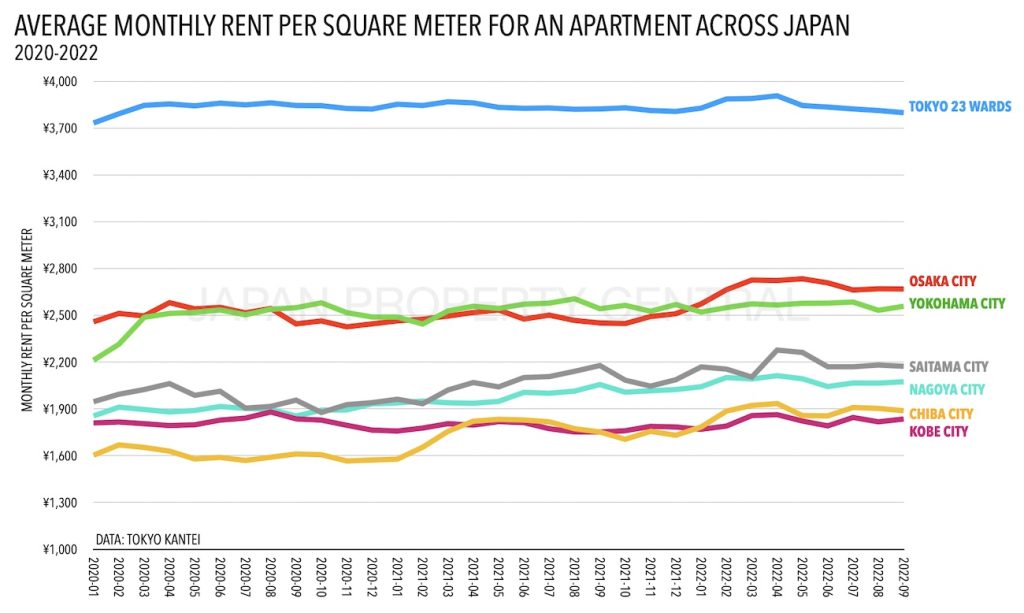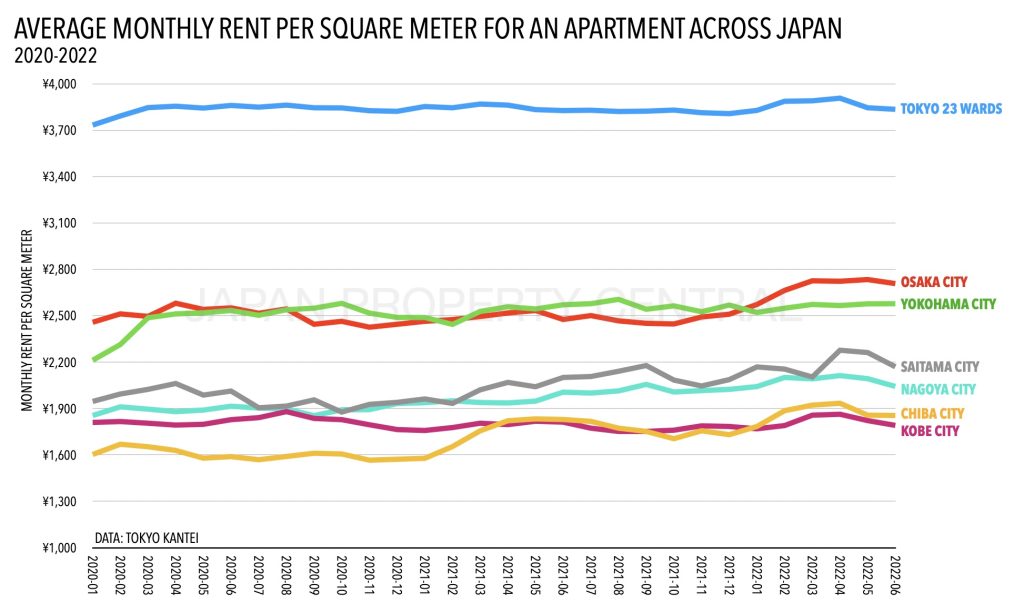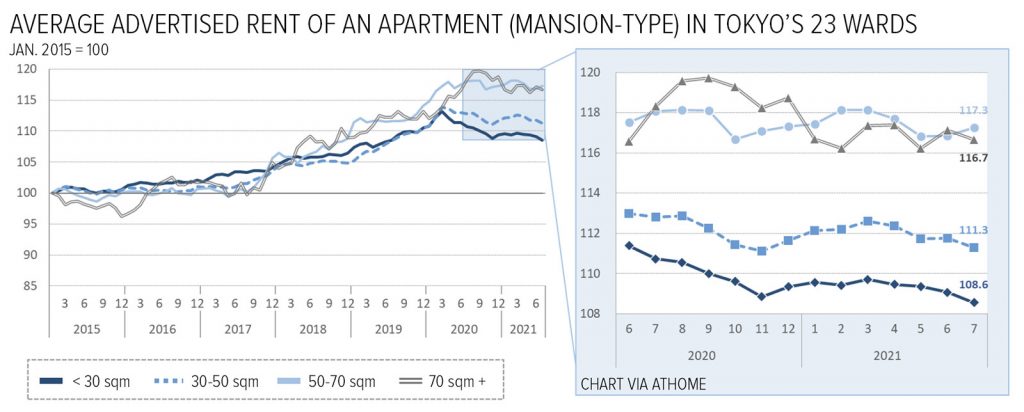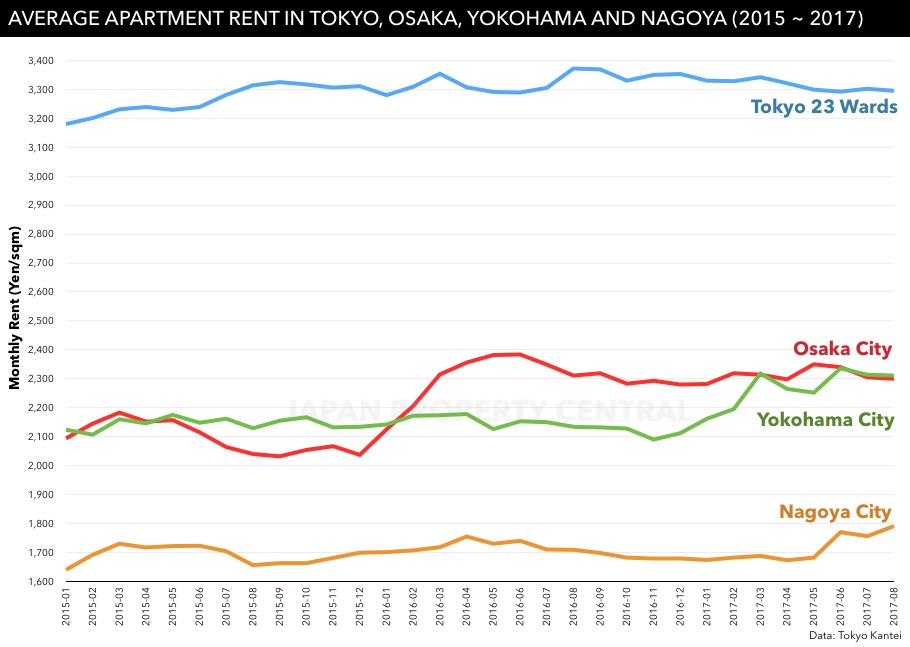Tokyo’s rents increase for first time in 6 months

The average monthly rent of a condominium-type apartment in Tokyo’s 23 wards was 3,820 Yen/sqm in October, up 0.6% from the previous month. This is the first month-on-month increase in 6 months. Rents are down 0.3% from last year.
Tokyo apartment rent hits 2.5 year low

In September, the average monthly rent of a condominium-type apartment in the Tokyo metropolitan area was 3,712 Yen/sqm, down 0.3% from the previous month and last year, and the lowest level seen in 12 months. Neighboring Saitama and Chiba both saw rents fall by 1.0% and 1.7% from the previous month, although they are still higher than they were 12 months ago.
Tokyo apartment rents drop slightly after moving season

The average monthly rent of a condominium-type apartment in Tokyo’s 23 wards was 3,835 Yen/sqm in June, down 0.3% from the previous month but up a slight 0.2% from last year. The average apartment size was 51.38 sqm (553 sq.ft).
Apartment rents in Tokyo remain flat throughout pandemic

Unlike some other major cities across the world, average apartment rents in Tokyo have remained somewhat flat throughout the pandemic with little volatility.
How has Tokyo's rental market changed since the pandemic

News reports are still coming out about an exodus from Tokyo as the coronavirus pandemic continues, but has this had any effect on the real estate market in Tokyo’s 23 wards?
Tokyo apartment rents drop across all size ranges

According to the latest data on the residential rental market provided by AtHome, the average advertised rent across all four apartment types saw a year-on-year decline in Tokyo’s 23 wards.
Average apartment rent down in greater Tokyo

According to Tokyo Kantei, the average monthly rent of a condominium-type apartment across greater Tokyo in August was 2,628 Yen/sqm, down 0.1% from the previous month and down 1.2% from last year. The average apartment size was 59.74 sqm and the average building age was 21.1 years.
